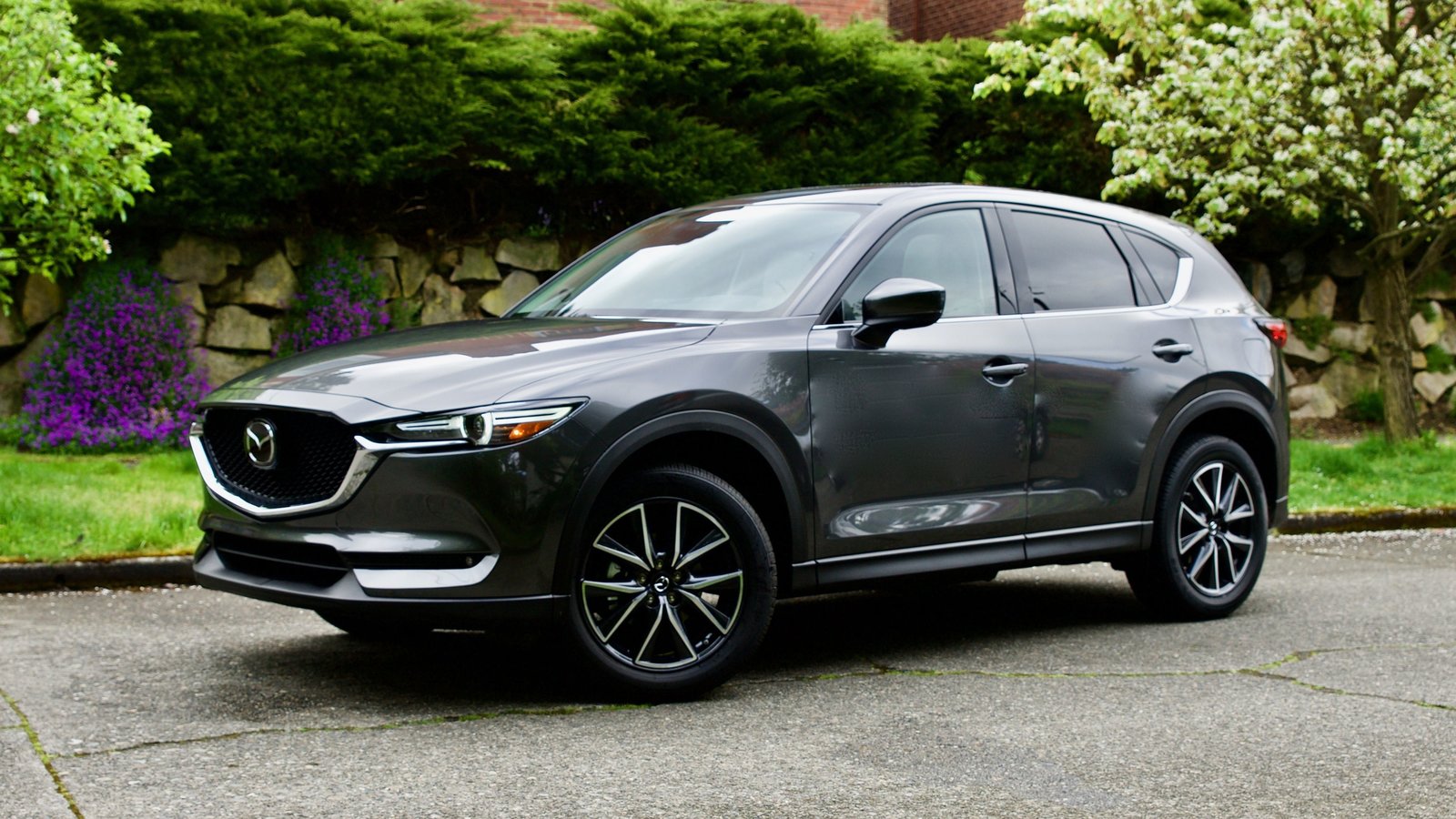If you’re anything like me, your car is more than just a chunk of metal with four wheels it’s your morning retreat, your mobile concert venue, and occasionally, your spontaneous snack station.
That’s why choosing the right ride for your daily commute isn’t just a decision it’s a reflection of your lifestyle. And that’s exactly where we come in at Get Drivers Ed think of us as your local, friendly car matchmakers.
Let’s face it, commuting can be a real grind. But the right vehicle? It can transform that tiresome routine into something… well, a little less tedious. A seat that feels like a warm hug and a car that sips fuel like it’s a vintage wine can make all the difference.
Cars That Make Your Daily Commute Comfortable
Let’s face it—daily commuting can be a grind. Whether you’re stuck in bumper-to-bumper traffic or cruising down open highways, the car you drive makes a huge difference in how bearable (or even enjoyable) that daily journey feels.
While fuel economy and reliability are important, true comfort comes from a blend of quiet cabins, smooth rides, intuitive tech, and supportive seating that doesn’t leave your back screaming after an hour behind the wheel.
In this article, we highlight the cars that go beyond basic transportation to deliver a serene, stress-reducing commute—day in, day out.
Toyota Prius
Say hello to the Toyota Prius, a true icon in the realm of fuel-efficient wonders. It’s the Clark Kent of the car world unassuming in appearance but a superhero when it comes to saving gas.
With its spacious interior and whisper-quiet cabin, it feels like your own personal sanctuary during those bumper-to-bumper traffic dances.
The 2025 Toyota Prius continues to redefine the hybrid segment by blending exceptional fuel efficiency with a bold design and enhanced performance.

Building upon the fifth-generation model introduced in 2023, the latest Prius maintains its reputation for delivering impressive mileage while introducing new features that elevate its appeal. Notably, the addition of the Nightshade trim level brings a distinctive aesthetic to the lineup, featuring blacked-out exterior accents and exclusive design elements.
This new variant complements the existing LE, XLE, and Limited trims, offering consumers more choices to suit their preferences. With its combination of practicality, style, and advanced technology, the 2025 Prius stands out as a compelling option for those seeking an efficient yet engaging driving experience.
Honda Accord
The Honda Accord is that reliable friend who’s always there when you need them. It’s as consistent as the sunrise and delivers a driving experience as smooth as your go-to jazz track.
Step inside, and you’re greeted with generous space and plush comfort it’s basically a comfy living room that just happens to have wheels.
The 2025 Honda Accord continues to uphold its longstanding reputation as one of the most well-rounded midsize sedans available. Renowned for its solid fuel efficiency, spacious interior, and consistently smooth drivability, the Accord remains a go-to choice for families and commuters alike. Honda’s legacy of reliability only reinforces its appeal.
For 2025, the Accord lineup sees a few updates, including the replacement of the base LX trim with a new SE model. Additionally, rear-seat passengers now benefit from standard air vents and USB-C ports across all trims. These enhancements build on the substantial redesign introduced in 2023, which marked the beginning of the Accord’s 11th generation.
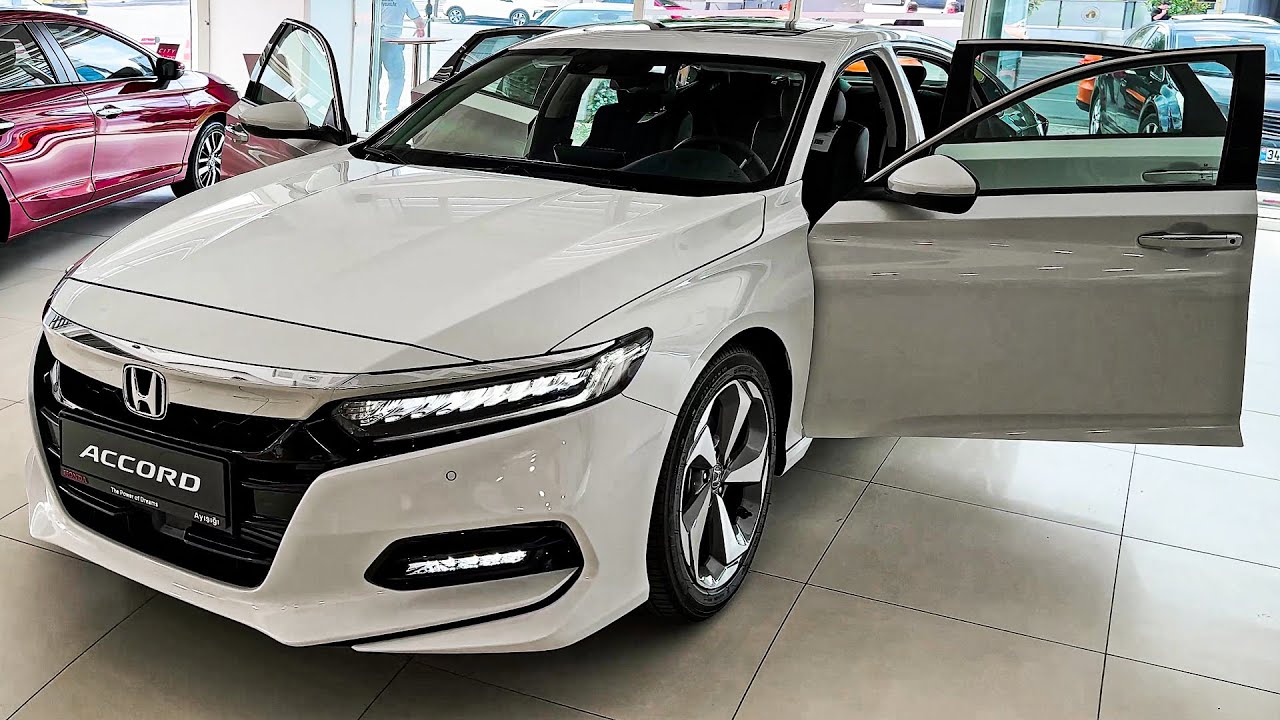
One of the most significant changes carried over from that redesign is the use of a hybrid powertrain on the upper trims. This system delivers 204 horsepower and achieves a commendable 44 mpg combined—or up to 48 mpg combined in the EX-L Hybrid—making it both powerful and efficient.
It offers generous rear legroom, a sizable trunk, excellent driver visibility, and a refined suite of advanced safety and driver assistance features. That said, not everything is perfect. Some desirable features remain locked behind the top-tier trims, and Honda still doesn’t offer all-wheel drive or a sportier engine variant.
Its exterior styling also continues to draw mixed reviews, with some critics calling it too understated. Nevertheless, the 2025 Honda Accord remains a sound and sensible choice in the segment.
While the Accord is an excellent option, shoppers would also do well to consider other midsize contenders like the Hyundai Sonata, Kia K5, and Toyota Camry. For those looking for a slightly smaller vehicle with comparable practicality and now the same hybrid system as the Accord, the Honda Civic is also worth a closer look.
Tesla Model 3
The Tesla Model 3 is essentially a spaceship that fits right in your driveway. It runs entirely on electricity, so you can say farewell to gas stations, and it’s loaded with high-tech features that even James Bond would envy.
If you’re passionate about state-of-the-art technology and doing your part for the planet, this car is like striking gold.
The Tesla Model 3 is widely credited with creating the electric compact sedan segment, and it remains an attractive option for those in the market for an EV.
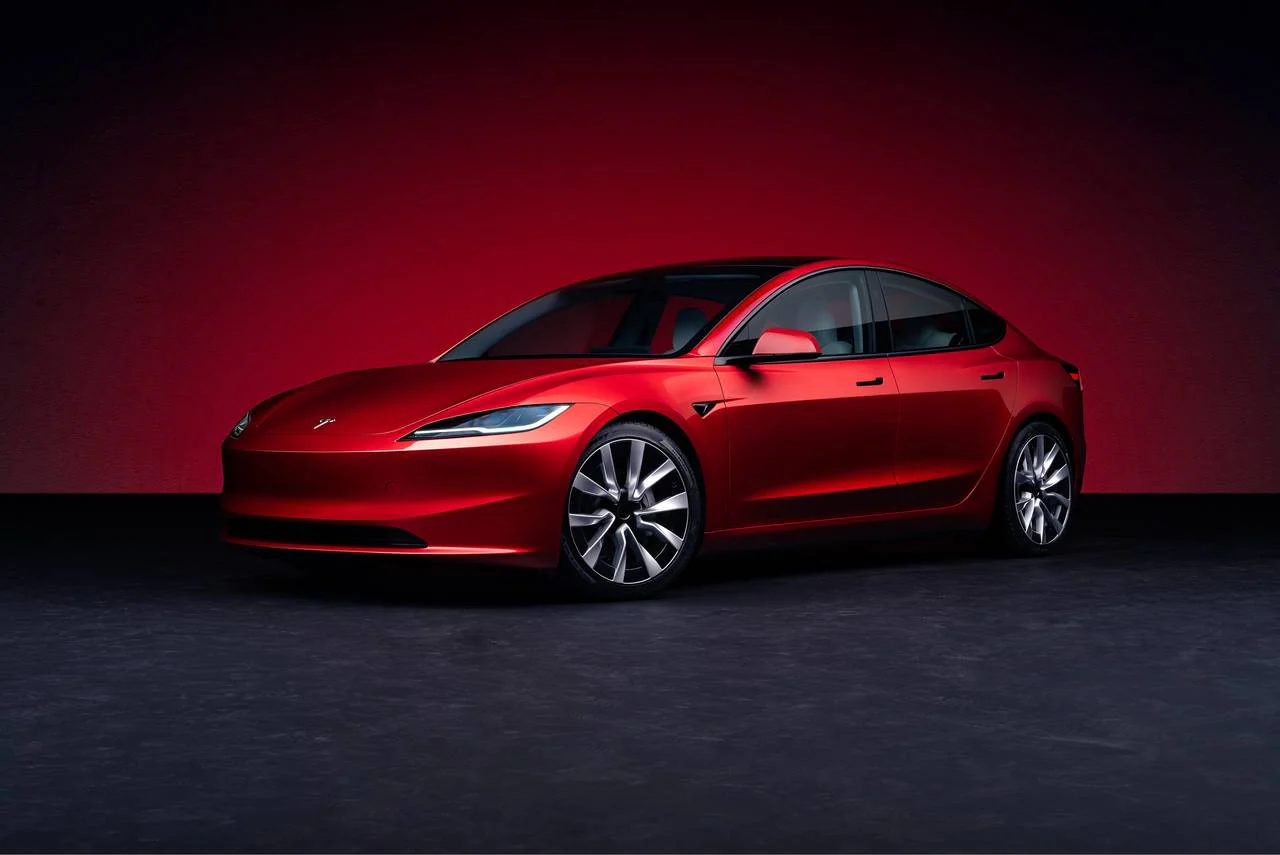
The recent “Highland” updates to the Model 3 addressed some of the car’s previous shortcomings, with notable improvements to the suspension that enhance ride comfort, along with upgraded interior materials that give the cabin a more refined feel.
These changes were significant enough to earn the Model 3 a spot on our 10Best list this year. However, despite these upgrades, the infotainment system still lacks Apple CarPlay and Android Auto compatibility.
Additionally, Tesla has further reduced physical controls in the Model 3; the vehicle is now stalk-free, with the turn-signal controls integrated into the steering wheel and the gear selector moved to the display.
Hyundai Sonata
The Hyundai Sonata is like that under-the-radar indie film you didn’t think you’d love but end up absolutely loving.
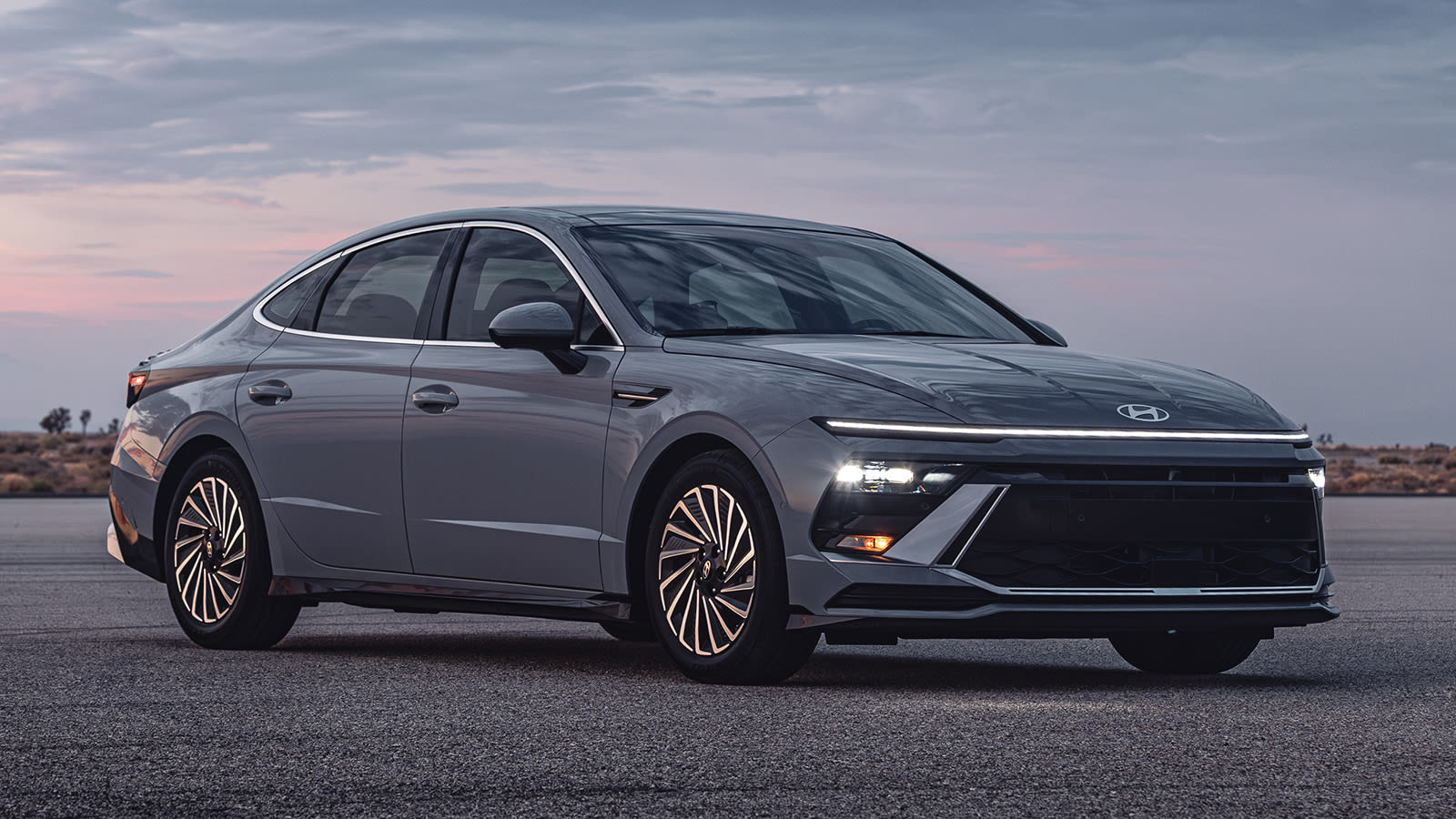
It delivers everything you need: a ride as smooth as a buttered slide, an interior focused on comfort, and impressive fuel efficiency that’s easy on your wallet.
The 2025 Hyundai Sonata stands out as a solid choice in the midsize sedan category. It’s available in both hybrid and traditional gasoline-powered versions, with the added flexibility of either front-wheel or all-wheel drive options.
The Sonata received a styling update last year, making it appear more bold and contemporary, a crucial change to stay competitive in a market that is increasingly focused on SUVs. Thanks to the major refresh in 2024, the 2025 Sonata sees no significant changes.
In terms of cost to drive, estimates for the 2025 Sonata SE 4dr Sedan (2.5L 4cyl 8A) suggest a monthly fuel cost of around $120, based on 15,000 miles per year, with a combination of 55% city and 45% highway driving. This is notably lower than the average midsize car, which costs around $160 per month in fuel.
One of the highlights of the Sonata lineup is the Sonata N Line, which, while not a full performance vehicle, offers a turbocharged 2.5-liter four-cylinder engine producing 290 horsepower.
In addition to the performance boost, the N Line comes fully equipped with every feature Hyundai has to offer, making it a powerful and feature-packed option in the midsize sedan segment. If you’re looking for a quick sedan that offers more power than the competition, the Sonata N Line is a top choice.
While the Sonata has many strengths, it does come with a few drawbacks. Its comfort levels don’t quite match some of the top competitors in the segment, and some of the interior materials feel a bit cheap.
However, with a roomy interior, generous standard tech features, and high fuel economy in the Sonata Hybrid, it remains an excellent option for those prioritizing value and style.
For those considering other options, the Honda Accord and Toyota Camry are worth looking into. The Camry now offers hybrid versions across all trims, while the Accord offers a hybrid powertrain in its higher trims.
Additionally, the 2025 Kia K5, which shares its platform with the Sonata, also gets a refresh this year. Overall, the Sonata is a great pick if style and value are your top priorities.
Mazda CX-5
Looking for something with a little extra spark? The Mazda CX-5 is just the ride you need. It’s a crossover that brings serious style and packs the spirit of a sports car.
You get all the utility of an SUV, combined with the nimbleness of a compact, turning every commute into a mini adventure.
The Mazda CX-5 has been in production since 2017, which is considered quite a long time in the automotive industry. Despite its age, the CX-5 remains a standout in the compact-crossover segment, offering a combination of style, driving enjoyment, and practicality that continues to set it apart.
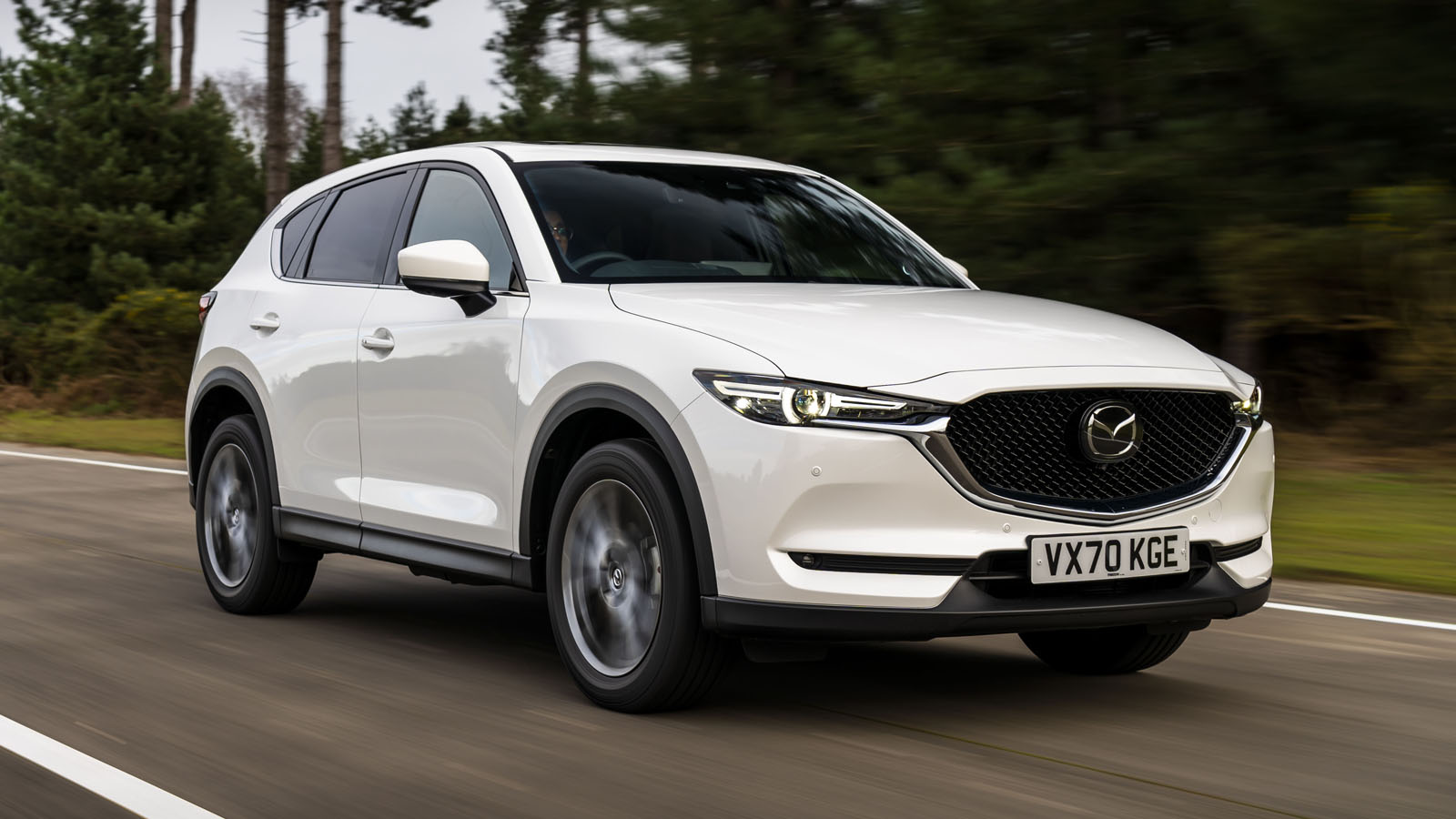
In 2023, Mazda introduced the slightly larger and more expensive CX-50, but the CX-5 has not been scaled back in favor of its new sibling. Instead, it continues to offer eight trims, two four-cylinder engine options (including a lively turbocharged engine), all-wheel drive, a well-appointed interior, and a driving experience that’s as fun as it is practical.
While competitors like the Honda CR-V and Toyota RAV4 may have the edge in terms of practicality, the CX-5 still provides ample passenger and cargo space for most buyers. With its engaging driving experience, it remains one of the most compelling choices in the compact-crossover category, especially for those who prioritize driving pleasure.
The Mazda CX-5 has been in production since 2017, which is quite a long time in the automotive industry. Despite the arrival of newer compact-crossover models, the CX-5 has maintained its reputation as one of the most attractive and fun-to-drive options in its class.
In 2023, Mazda introduced the CX-50, a slightly larger and more expensive model, but the CX-5 lineup remained unchanged. It still offers eight different trims, a choice between two four-cylinder engines (one of which is a turbocharged version), all-wheel drive, a well-appointed interior, and a driving experience that stands out from its competitors.
While crossovers like the Honda CR-V and Toyota RAV4 may have the upper hand in terms of practicality, the CX-5 continues to provide enough passenger and cargo space for most buyers.
Moreover, its engaging driving dynamics make it one of the most appealing choices in the compact-crossover segment, particularly for those who enjoy a more spirited drive. As one of our favorites in the segment, the Mazda CX-5 has earned a spot on our Editors’ Choice list for 2025.
For the 2025 model year, the CX-5 brings a few updates, including the return of the S trim for a more affordable base model. The non-turbo Premium trim has been discontinued, and the Carbon Edition now includes standard features such as wireless Apple CarPlay, Android Auto, and phone charging.
The Premium Plus trim has also received a boost with the addition of a surround-view camera system and parking sensors. Additionally, all CX-5 models now come with USB-C inputs for the front seats. The 2025 Mazda CX-5 starts at $30,190 and ranges up to $42,220, depending on the trim and options.
We recommend the Turbo Premium trim as the best all-around option due to its upgraded 256-hp turbocharged engine, which enhances the vehicle’s athletic handling. This trim also features sportier exterior styling with gloss-black accents and a more dynamic interior with red accents and stitching.
The CX-5’s standard 187-hp four-cylinder engine offers excellent throttle response, making it feel quicker than expected when driving around town or starting from a stop. However, it does lack the power needed for fast freeway merges or overtaking.
Cars That Hurt Your Back
Whether you’re behind the wheel or riding shotgun, the seat in a car has a major impact on your overall experience.
A great seat can make for a smooth, enjoyable journey. A terrible one? It can turn even the shortest drive into a nightmare.
Given how much depends on these seemingly simple combinations of fabric and metal, we wanted to uncover which vehicles are saddled with the worst seats out there.
So, we reached out and asked: what cars have the worst seats you’ve ever sat in? From sedans and SUVs to hatchbacks and minivans, the responses poured in. Here are some of the most frequently mentioned offenders.
Ford Focus ST
“This one’s easy: the ‘Recaros’ in a Focus ST. The seatbacks were excellent, but the seat bottom, with the rock-hard narrow bolsters, basically made the seat unusable to anyone over five foot eight, 150 pounds.
And I am WELL over those sizes. Even at my lightest, where I was gaunt, there would have been no hope.

“There were many people who bought those cars that had to mod the seats to make them usable, or swap with a really skinny person to get the seats from a U.S.-market base model.
“Compounding matters was that in Canada, one could ONLY get the Recaros. There was no other option.”
Racing-style seats are great if you’re actually hitting the track. But if you’re just running errands in your sporty hatchback, the Recaro seats might not be the most practical choice.
The Ford hot hatch has been a constant presence in the automotive world for decades, offering a reliable and thrilling choice for enthusiasts. Ever since the debut of the first-generation Ford Focus in 1998, there have been high-performance variants to elevate the daily driving experience: the initial model introduced the hardcore RS, while the second-generation Focus added a slightly less intense ST version.
These models have always been quick, fun, and practical, though they may not carry the same budget-friendly pricing they once did.
Unfortunately, the current fourth-generation Focus, which debuted in 2018 and received a facelift in 2022, is reaching the end of its run. It will be discontinued after 2025, with no replacement planned, likely due to the ever-growing demand for crossovers.
Meanwhile, the Volkswagen Golf GTI continues its reign, though competitors like the BMW 128ti and Hyundai i30N are no longer available. The Toyota GR Yaris enters the fray but comes at a higher price point, along with the Honda Civic Type R and VW Golf R, which belong to a more serious category of hot hatches.
As for the Focus ST, it doesn’t stand out as dramatically as some might expect. With the exception of the Mean Green paint (since the distinctive orange color from previous generations is no longer an option), it closely resembles the regular 1.0-liter Focus ST-Line.
The 19-inch wheels and lowered suspension help differentiate it, but the panels of the new Focus seem too billowy to provide the road-hugging, aggressive stance typically desired in a hot hatch.
However, the understated design hides the significant engineering improvements made to the ST. It doesn’t just feel like a more spirited Focus; it’s a car with more substance.
It features an electronically controlled limited-slip differential, as opposed to relying solely on brake control to manage slipping wheels (although it has that, too). Standard adaptive damping enhances ride quality, while the brake servo is powered by an electric pump, preventing fade during track use or steep descents.
The suspension has been lowered by 10mm and stiffened, and the steering is quicker, all of which contribute to a more dynamic driving experience.
Chevrolet Equinox
Hands down the back seat of a 2005 Chevrolet Equinox. Mid 2000s budget GM with zero effort. No support, nothing. Harsh, sandpaper polyester fabric in the shape of a BROKEN park bench.
What made it worse? The seats were not supported on the outside edge. Anyone that sat on the outside had the seats outer front corner bend below the rest of the seat.
So it was high on the front interior, low on the front outside, and ‘meh’ against the back rest.
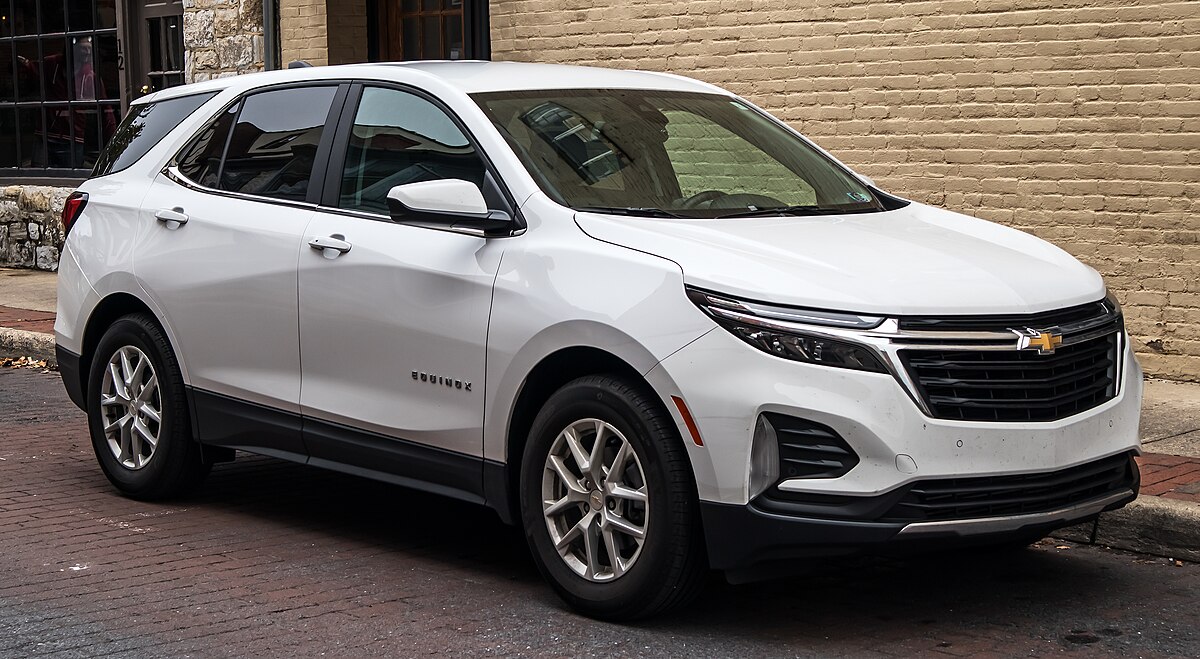
Combined with sitting a full one-foot higher than the front seats (and no extra headroom) it was akin to sitting on a sandpaper stool with one stool leg one-inch shorter that the other.
Finally add the hap-hazard ride, it was a short-legged stool in an earthquake… at sea.” You’d think more space would lead to more comfort but with this early 2000s Equinox, that logic didn’t hold up.
As Chevrolet prepares to introduce the Equinox EV, it hasn’t forgotten about the traditional gas-powered Equinox. This compact SUV enters a new generation with a refreshed design, updated infotainment, new transmission options, and other enhancements.
While these changes appear promising, only time will tell if they will be enough to push the model out of the lower half of its class. For those needing more space and a third row of seats, Chevrolet also offers the Traverse, which might be worth considering.
The 2025 Equinox boasts several new features, including an updated exterior design with squared-off wheel wells, fender flares, all-LED lighting, and distinct fascia treatments for each trim.
The vehicle is also 2.3 inches wider than the previous model, providing more interior space. The interior sees a technological upgrade with a new 11.3-inch infotainment screen, complete with Google built-in, as well as a larger digital gauge cluster.
The trim lineup has also been restructured with the introduction of the Activ trim, while the base LS trim and upgraded Premier trim have been removed. Additionally, the 2025 Equinox features new transmission options, including a CVT for FWD models and an eight-speed for AWD models, with a gear shift now located on the steering column.
The RS and Activ models also get a drive mode selector knob, allowing drivers to toggle between Normal, Snow, and Off-Road modes, while more safety and driver assistance features come standard.
The updated Equinox combustion model stands out with its fresh, truck-like appearance, featuring trim-specific front fascias and all-terrain tires on the Activ trim that perform surprisingly well on the road.
Inside, the cabin is upgraded with larger screens and a new configurable gauge cluster display, but drivers still need to press a button to engage the AWD.
While the engine carries over from the previous generation, the updated automatic transmissions make the new model feel more responsive off the line. The added driver assistance technologies help make the Equinox more competitive with other modern SUVs.
However, as long as the Equinox EV is available, Chevrolet may not be in any rush to release a hybrid version of the gas model, which could have positioned it more competitively against rivals like the Honda CR-V and Toyota RAV4.
Chevrolet Bolt
“My wife and I had considered a first generation Chevy Bolt as a commuter car to replace my 2014 Mazda3 Sport. When we saw one at the Toronto Auto Show I hopped in the driver’s seat to try it out and immediately thought, ‘these seats are terrible!’
“I have never had that reaction before. We sat in a lot of cars that day at the auto show, and the Bolt’s seats stood out for how bad they were. How did GM screw them up so severely?”
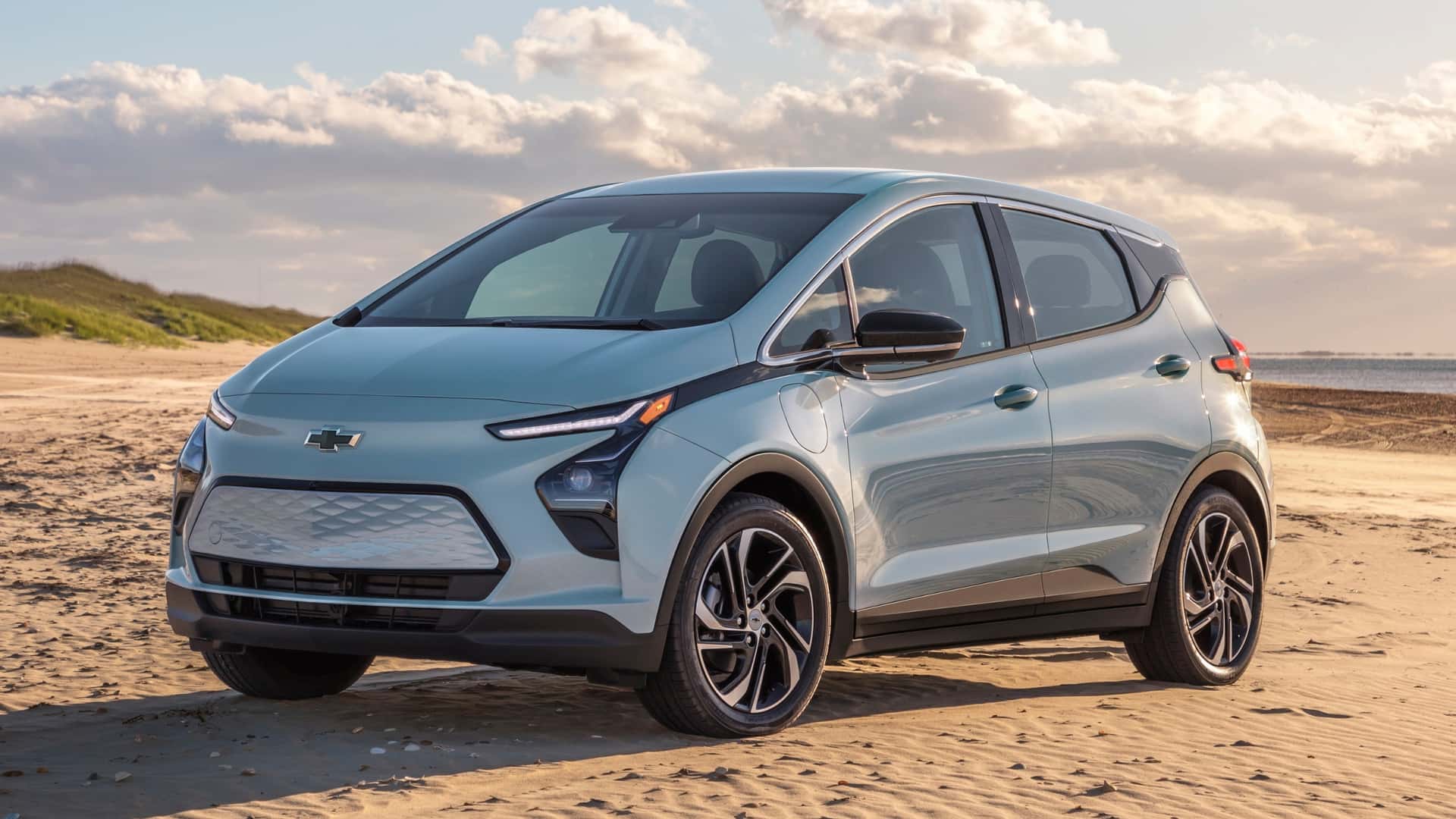
Electric vehicles often struggle to justify their elevated price tags when compared to gas-powered cars, and unfortunately, this premium doesn’t always translate into better comfort.
In fact, despite their higher cost, many EVs including the Bolt fail to offer seating that rivals even the most budget-friendly internal combustion vehicles.
The Chevrolet Bolt EV made its debut as an all-electric hatchback in 2017, quickly earning a dedicated following due to its affordability, making it one of the most budget-friendly electric vehicles on the market. In a surprising move, GM decided to discontinue both the Bolt EV and the larger Bolt EUV at the end of 2023.
Fortunately, this decision has been reversed, and an all-new second generation of the Bolt EV is expected for the 2025 model year. While there is limited information available about the next iteration, GM has confirmed that the Bolt EV will remain an affordable electric vehicle with a range that should meet the needs of most drivers.
Electric vehicles (EVs) tend to carry a higher price tag than their internal combustion engine counterparts. Even though fuel savings over the years can help offset the higher initial cost, many buyers still find the upfront price daunting. Historically, the Chevy Bolt EV has stood out as one of the most affordable EV options.
Additionally, being an American-made vehicle, it qualified for favorable government incentives, making it even more appealing. We are optimistic that the upcoming model will continue to be budget-friendly while offering a solid range.
The first-generation Bolt EV offered an EPA-estimated range of 259 miles on a single charge, though in real-world testing, we were able to achieve 278 miles. We anticipate that the next generation of the Bolt will surpass these figures, delivering even better range.
If the price of the new Bolt EV remains similar to that of the first generation, we expect it to start around $30,000. One of the biggest competitors in this price range is the new 2025 Volvo EX30, which offers up to 275 miles of estimated range.
Other affordable EVs in this range, however, fall short on range. For instance, the Nissan Leaf offers a maximum range of 212 miles, while the Mini Cooper SE is limited to just 114 miles.
For those willing to spend a bit more, the Hyundai Kona Electric provides about 260 miles of range, though it achieved 308 miles. Among all these options, the Bolt EV remains well-positioned to take advantage of the federal EV tax credit.
Honda Element
“Honda Element. I first drove my ex’s on a road trip, and thought the seats (which were obviously designed for someone in the low to mid five-foot range, not someone over six-feet, such as myself) were just seriously painful because it was such a long drive.
Then, I got stuck driving it when my Mini flaked out, and it even hurt just driving my half hour to work and back.

“Add into that, the ‘fold up’ seats, that ‘make room’ in the back for cargo, which not only don’t free up any space, but make the whole interior a weird shape that nothing much fits into, and the whole seating arrangement for that vehicle is just… ill-conceived.”
Designing a vehicle with uncomfortable front seats, awkward rear seats, and folding seats that don’t actually save space feels like a design crime.
The 2011 Honda Element 2WD Automatic LX Package is priced starting at $21,635. This model is classified as a 2WD Sport Utility and features a Front-Wheel Drive drivetrain.
The engine is a Gas I4 with a displacement of 2.4L (144 cubic inches) and uses Electronic Fuel Injection for its fuel system. It generates a maximum horsepower of 166 at 5,800 RPM and a maximum torque of 161 at 4,000 RPM. The cooling system capacity is 7.5 quarts. The transmission is automatic with 5 speeds.
The M151
“Given my Army experience as NATO headcount, I’ve got an easy choice the M151 Jeep that made my ass hurt over in Germany.
“Look at that seat: a tubular frame with some thin padding. Plus the seat is as ergonomic as a crate with a rug thrown over it.

Then add in the pitching that the damn thing does due to the short wheelbase makes my butt hurt to even write this.” On one hand, you might expect a military vehicle to skip creature comforts.
But if you’re constantly focused on how miserable your seat is, how are you supposed to mentally prepare for the far greater challenges of a soldier’s life?
The role once held by the Willys Jeep in many military forces is now occupied by the well-known Humvee, also recognized by its civilian counterpart, the Hummer.
But what vehicles filled this gap between the two iconic models? In 1949, the Willys M-38 replaced the original Willys Jeep. It could be identified by its wider headlights and was the primary Jeep used during the Korean War (1950-1953).
In 1952, the Willys M38A1 debuted, remaining in production until 1971. However, in the 1960s, the U.S. Army phased out the M38A1, eventually replacing it with the Ford M151 MUTT (Military Utility Tactical Truck), which became the last evolution of the original Jeep design.
Development for the Ford M151A1 MUTT began in 1951, after Ford was awarded a contract by the U.S. Army to replace the M-38 Jeeps.
While the MUTT resembled the Jeep externally, it was a completely new design, featuring a new frame, bodywork, a longer wheelbase, more ground clearance, and a more spacious interior. Notably, the front grille of the MUTT had horizontal slats, a distinct departure from the Jeep Willys’ vertical slats.
Despite these modernizations, the MUTT retained some of the Jeep’s original features, such as its compact size—measuring 3.3 meters in length and 1.6 meters in width—and its light weight, which was only 1,100 kg.
The first model, the M151, introduced in 1960, featured independent rear suspension. However, this system led to issues, including frequent rollovers when the vehicle was driven aggressively.
In 1964, Ford introduced the M151A1 version of the MUTT, which improved the rear suspension to handle heavier loads. Additionally, this version featured flat front fenders with flashing lights, making it distinct. The M151A1 became the standard version of the MUTT during the Vietnam War, where it was used by both the United States and South Vietnamese armies.

